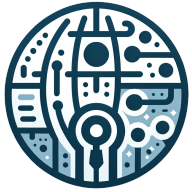4 Balancing Productivity With a Safe Work Environment: Lessons Learned
In the fast-paced world of logistics, balancing productivity with workplace safety is a critical challenge. This article delves into key strategies for achieving this balance, drawing on insights from industry experts. From prioritizing impact over volume to implementing mental health-focused systems, discover practical approaches to foster sustainable growth and a safer work environment in the 3PL industry.
- Prioritize Impact Over Volume for Sustainable Growth
- Safety Protocols Boost Productivity in 3PL Industry
- Reassign Tasks to Prevent Team Burnout
- Implement Focus Reset System for Mental Health
Prioritize Impact Over Volume for Sustainable Growth
Balancing productivity goals with maintaining a safe work environment isn't just a leadership responsibility—it's a strategic advantage. At Nerdigital, we've always believed that a healthy, secure team produces better work. But that balance is something we constantly need to be intentional about, especially in fast-paced, high-growth phases.
A clear example came during a particularly aggressive growth quarter. We had several major client campaigns launching simultaneously, and the pressure to deliver quickly was intense. It would have been easy to push the team to work longer hours, blur personal boundaries, and just "grind through." But that's not sustainable, and it certainly doesn't build trust or longevity.
Instead, we took a step back and adjusted our internal sprints. We prioritized deliverables based on impact rather than volume, scaled back less critical meetings, and implemented mandatory digital check-out times—literally encouraging our team to unplug after hours. We also offered mental health days with no questions asked, and our leadership made it a point to lead by example, taking breaks and setting boundaries visibly.
The result? Not only did we hit our deliverables, but our team reported higher satisfaction and lower stress in our follow-up survey. One of our best-performing campaigns that quarter actually came from a brainstorming session held during one of our no-pressure Friday "think hours," which wouldn't have happened if the team was burned out.
Safe environments don't slow you down. They fuel sustainable growth. When people feel seen, supported, and protected, they bring their best work forward—not out of obligation, but out of shared purpose. The productivity gains that follow are real, but more importantly, they're rooted in long-term health—for the team and the business.

Safety Protocols Boost Productivity in 3PL Industry
Balancing productivity with safety isn't just a business requirement—it's a strategic advantage in the 3PL industry. In our world of warehousing and fulfillment, where efficiency metrics drive bottom lines, we've found that safety and productivity actually complement rather than compete with each other.
At Fulfill.com, we've implemented what I call an "escalation framework" across our network of 3PL partners. This system clearly defines when team members should handle issues independently, when to notify leadership, and when direct intervention is necessary. This approach has been transformative, particularly during peak season last year when one of our partner warehouses was struggling with both safety incidents and throughput challenges.
The warehouse was facing pressure to increase units processed per hour while dealing with a surge of temporary workers. Rather than pushing harder on productivity targets, we helped them implement visual safety protocols and restructured workflows. The result was counterintuitive but powerful—by prioritizing proper training and creating safer workstations, their error rates dropped by 22% and productivity actually increased by 17% within weeks.
I've learned that safety shortcuts inevitably create productivity issues downstream. When workers worry about their safety, cognitive bandwidth that should go toward efficient execution gets diverted to self-preservation. By investing in proper equipment, training, and workstation ergonomics, you're actually investing in productivity.
The most successful 3PLs in our network don't view safety compliance as a cost center but as an operational enhancement tool. They're leveraging technology like wearables and AI-powered visual inspection systems that simultaneously monitor safety compliance and process efficiency.
The key is creating transparency without micromanagement. When teams understand both the "why" behind safety protocols and how those protocols connect to business outcomes, they become partners in balancing these priorities rather than seeing them as competing directives.
Reassign Tasks to Prevent Team Burnout
We move fast as an agency, but speed doesn't come at the expense of our team's well-being. We build in margin by prioritizing weekly planning and giving team leads control over their bandwidth. If someone's overloaded, we reassign tasks or push deadlines—it's as simple as that.
One example: during a busy season, our SEO team was swamped with audits and link-building work. Rather than burn them out, we paused lower-priority projects, brought in a freelancer to handle routine reporting, and let the team focus on the work that required deep expertise. We still met our client KPIs, and no one was negatively impacted in the process.
Implement Focus Reset System for Mental Health
At Gotham Artists, we faced this exact tension during a high-stakes event booking sprint where timelines were tight, but burnout was looming. Our solution? We implemented a "Focus/Reset" system that treated mental fatigue the same way OSHA treats physical fatigue.
Each team member had two-hour focus blocks—non-interrupted, deep work time—followed by a mandated 15-minute reset. These breaks were not optional. No Slack. No calls. Just walk, stretch, snack, breathe.
At first, it felt like we were slowing down. But here's what happened: response times improved, error rates dropped, and team energy actually increased in the second half of each day.




